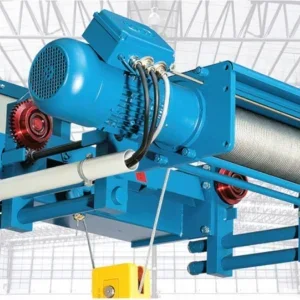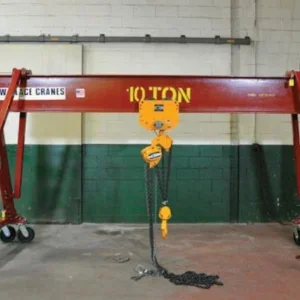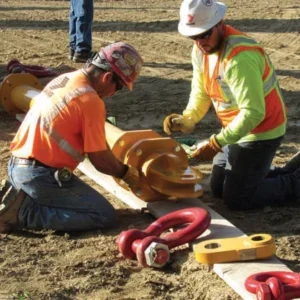Ergonomics in our industry covers various aspects of product design, but two of they key areas of concern are making sure than any manual lifting does not cause strain on the body, and that controls, particularly those which are likely to be used repeatedly and regularly, are comfortable to use and, again, won’t strain the hand or wrist.
It’s an area that is given a lot of attention, which is satisfying to see and shows the lifting industry in a good light.
The mechanics of a hoist are old—I won’t attempt to give any history lessons, but looking at ancient monuments such as the Pyramids and Stonehenge, some sort of lifting equipment was employed, and the basic principles used are not dissimilar to the ones used today.
What’s pleasing to see is that our industry is not only endlessly innovating and refining to produce a wider range of more efficient and more useful equipment, it’s also focusing on health and safety, which is a sophisticated concern and proves that this ancient technology is very much up-to-date with modern values.
Of course, there are motivational factors for health and safety in the workplace that extend beyond the general betterment of humanity—litigation against employers who don’t act to prevent accidents and long-term injuries, as well as the downtime caused by staff being absented through ill health, are all costly concerns.
The end result of all the reasons, though, is that we have a safer, more respectful, and more attractive industry. You don’t have to have worked in this industry for long to know that recruitment of new workers into the sector is an increasingly important issue, with one fully-trained generation in the process of retiring.
Industry organisations such as LEEA are running initiatives to encourage people to join the lifting sector, from younger people joining through apprenticeships to former military personnel re-applying their engineering know-how.
One area that is being addressed is making sure potential new workers are aware of what the lifting industry can offer, and what the conditions are actually like. As well as highlighting the wide range of work available—from manual work on the factory floor through to computer-based engineering—it’s important that the industry emphasises how much focus is being placed on creating and maintaining a safe working environment.
To someone without experience of the industry, seeing a factory floor for the first time, with multiple-tonne girders moving large components around, forklift trucks scooting about, sparks flying in the weld shops, and everything else that goes on, it may seem a daunting and potentially dangerous prospect as a workplace.
Of course, care must always be taken but with all parties working together—the facility operators, the equipment manufacturers, and the workers themselves—to the same end goals, our industry has put itself in a very strong position and one that should be talked about.
Over here in the UK, it looks as though Brexit may finally happen very soon, and we’ll be free to make our own health and safety rules. The industry would be foolish to work to any standards lower than the ones we already meet.






